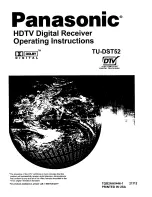
10
be found (but not programmed). EDACS systems need all the frequencies for the system
programmed and with the correct LCN (Logical Channel Number) assigned.
The control channel is continually transmitted to the field units and has a sound similar to listening
to a boat engine over the phone (in manual mode; you won’t hear this when you are trunking the
system.) This control channel is also a good check to see if you can trunktrack the system. If you
can’t hear a control channel when you step through the trunking frequencies (in manual mode) or
can hear dropouts or interference, you either are too far away to receive the control channel and
the system or there is some interference source that will inhibit tracking and reception. Motorola
systems are limited to a maximum of 28 frequencies per site. EDACS systems are limited to 25
frequencies per site. Motorola and EDACS systems can be either analog, digital, or mixed (digital
and analog talkgroups). Mixed Motorola systems should be programmed as Motorola systems
and not P25 digital systems. That way the talkgroup options will allow you to select if it is a digital
or analog.
LTR systems work a little differently. LTR systems typically do not have a dedicated control
channel. This type of system encodes all trunking information as digital subaudible data that
accompanies each transmission. The frequencies also have to have the LCN (Logical Channel
Number) programmed for the scanner to trunktrack properly. Each repeater has its own controller,
and all of these controllers are synchronized together. Even though each controller monitors its
own channel, one of the channel controllers is assigned to be a master that all controllers report
to. Each of these controllers sends out a data burst approximately every 10 seconds so that the
subscriber units know that the system is there. This data burst is not sent at the same time by
all the channels, but happens randomly throughout all the system channels. If you listen to the
frequencies of an LTR system in manual mode (not trunking), on every channel in the system
you will hear this data burst that will sound like a short blip of static like someone keyed up and
unkeyed a radio within about 500 msec. LTR systems are limited to 20 frequencies per system.
When scanning a P25, Motorola, or EDACS trunked system, the scanner actually sits on a single
frequency (the control channel) and compares the channel grants and channel updates in the
data stream to the channels you have programmed in the scanner (in ID Scan mode; in ID Search
mode, the scanner follows all channel grants for IDs you’ve not otherwise locked out). If there is a
match, then the scanner jumps to the voice frequency that is carrying the traffic for that channel.
The “scan speed” for a trunked system is actually determined by how long it takes for the site to
transmit all channel grants and channel updates; typically 1-2 seconds per site.
UNDERSTANDING MULTI-SITE TRUNKING
Some Motorola and EDACS systems covering a very large geographic area use multiple antenna
sites that each operate on different frequencies and use the same talkgroup IDs for traffic. Each
site has its own set of trunking frequencies and is monitored like a single system. Each site can
have its own quick key, so you can turn each individual site on or off while you scan. Program your
talkgroups into channel groups within that system and all talkgroups in the system are available
to every site so they don’t have to be reprogrammed for each site. Since all sites share all the
talkgroups within the system, multi-site trunking is much more efficient than programming each
site as a separate system.
UNDERSTANDING IDS
IDs are what you see instead of frequencies when you monitor a trunking system.
Motorola IDs come in two display formats: Type I and Type II. Each format displays and uses
talkgroup IDs in slightly different ways. Type I/II hybrid systems use both fleet-subfleet and 5-digit
formats for talkgroup IDs.















































